-
 Bitcoin
Bitcoin $115100
1.27% -
 Ethereum
Ethereum $3675
2.71% -
 XRP
XRP $2.995
1.45% -
 Tether USDt
Tether USDt $1.000
0.02% -
 BNB
BNB $769.8
2.64% -
 Solana
Solana $168.0
3.25% -
 USDC
USDC $0.9999
-0.01% -
 TRON
TRON $0.3371
1.48% -
 Dogecoin
Dogecoin $0.2051
3.36% -
 Cardano
Cardano $0.7394
2.30% -
 Hyperliquid
Hyperliquid $38.15
0.42% -
 Stellar
Stellar $0.3966
-0.36% -
 Sui
Sui $3.486
2.93% -
 Chainlink
Chainlink $16.72
2.52% -
 Bitcoin Cash
Bitcoin Cash $568.0
4.36% -
 Hedera
Hedera $0.2440
2.59% -
 Ethena USDe
Ethena USDe $1.001
0.04% -
 Avalanche
Avalanche $22.16
2.06% -
 Litecoin
Litecoin $119.1
-0.73% -
 UNUS SED LEO
UNUS SED LEO $8.991
0.04% -
 Toncoin
Toncoin $3.232
-0.39% -
 Shiba Inu
Shiba Inu $0.00001233
2.82% -
 Uniswap
Uniswap $9.717
2.53% -
 Polkadot
Polkadot $3.664
1.85% -
 Dai
Dai $1.000
0.01% -
 Monero
Monero $281.2
-3.89% -
 Bitget Token
Bitget Token $4.350
1.55% -
 Cronos
Cronos $0.1428
5.07% -
 Pepe
Pepe $0.00001050
3.68% -
 Aave
Aave $262.3
3.54%
How can I determine whether an NFT project's community is healthy?
A healthy NFT community thrives on active engagement, transparency, and shared values—not just size, but meaningful interactions and trust in the team.
Aug 07, 2025 at 06:29 am
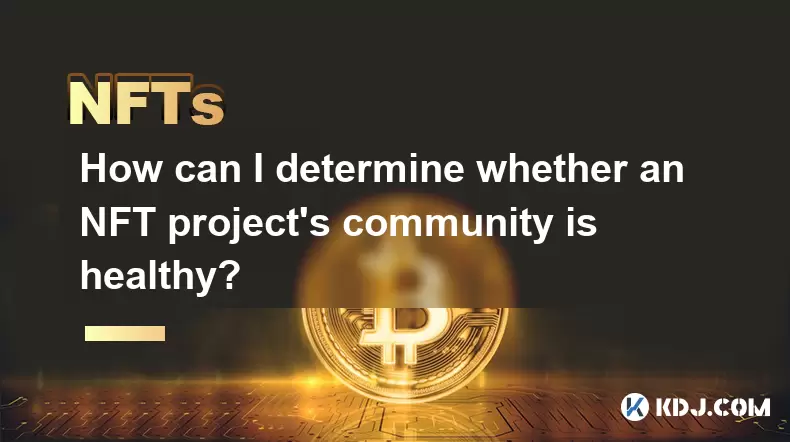
What defines a healthy NFT community?
A healthy NFT community is more than just a large group of followers on social media. It reflects active engagement, shared values, transparency from the project team, and a sense of belonging among members. Active participation is a key indicator—look for consistent conversations in Discord, Telegram, or Twitter (X) that go beyond simple price speculation. Healthy communities often have members who contribute ideas, create fan art, or help onboard newcomers. The presence of moderators and organized channels in Discord servers signals structure and intent to maintain a positive environment. A community where members feel safe to express opinions and receive thoughtful responses from the team demonstrates trust and inclusivity.
How to analyze engagement levels in an NFT community
To assess engagement, start by joining the project’s Discord server and observe the activity over several days. Look for:
- Frequent, meaningful messages in general and discussion channels
- Member-to-member interactions without constant prompting from moderators
- Use of voice channels or community events like AMAs, game nights, or art contests
- Low levels of spam or repetitive price-related questions
Check the Twitter (X) presence as well. A healthy project will have tweets that generate genuine replies, retweets with thoughtful commentary, and user-generated content. Avoid projects where most engagement comes from bots or incentivized retweet campaigns. Tools like KingData or Nansen can help analyze wallet activity and social sentiment, revealing whether community growth is organic or artificially inflated.
Signs of transparency and trust from the project team
Transparency is a cornerstone of a trustworthy NFT project. A team that fosters a healthy community will:
- Regularly post development updates with clear timelines
- Share roadmaps that are realistic and updated as milestones are reached
- Host live AMAs where team members answer questions openly
- Publicly disclose team identities or at least provide verifiable LinkedIn profiles
Projects that hide team members behind pseudonyms without any proof of identity raise red flags. Also, check if the smart contract has been audited and if the code is publicly available on platforms like Etherscan. A team that shares progress, admits setbacks, and communicates openly builds credibility. Discord roles that clearly identify team members and moderators also contribute to transparency.
Red flags indicating a toxic or unhealthy NFT community
Certain behaviors and patterns can signal a deteriorating or manipulative environment:
- Excessive shilling and price pumping without substance
- Moderators deleting critical questions or banning users for skepticism
- Team members making unrealistic promises like “100x guaranteed”
- A sudden influx of new members with no real engagement—indicative of paid followers
- Community members expressing fear, confusion, or frustration in private messages or off-channel discussions
Another warning sign is centralized control, where only a few voices dominate conversations, and dissent is discouraged. If the Discord server is flooded with memes and hype but lacks technical discussion or long-term vision, the community may be driven by short-term speculation rather than genuine belief in the project.
How community governance reflects health
Projects that implement decentralized governance often have healthier communities. Look for signs that holders can influence decisions:
- Token-gated forums where NFT owners vote on proposals
- DAO (Decentralized Autonomous Organization) structures with active participation
- Polls and surveys conducted in Discord or snapshot.org
- Funding proposals for community-driven initiatives
When members feel ownership over the project’s direction, they are more likely to contribute positively. A high voter turnout in governance proposals indicates strong engagement. Conversely, if governance exists only on paper with no real participation, it may be a facade. Check past proposals—were they meaningful? Were results implemented? Active governance is a sign of a maturing, self-sustaining community.
Tools and methods to evaluate community sentiment
Several tools can help quantify and analyze community health:
- Discord analytics platforms like Disboard or DiscordStat to measure active users, message volume, and growth trends
- Twitter sentiment analysis tools such as Brand24 or Hootsuite to detect positive, neutral, or negative mentions
- NFT tracking platforms like Dune Analytics, where custom dashboards can show holder distribution, trading volume, and social mentions
- On-chain data from Etherscan or PolygonScan to verify contract interactions and wallet activity
Monitor how the community reacts to key events—mint launches, roadmap delays, or partnerships. A healthy community will express concerns constructively and support the team through challenges. Use Google Alerts or Telegram bots to track real-time mentions of the project name across platforms. Sudden spikes in negative sentiment may indicate emerging issues.
Frequently Asked Questions
How can I tell if a Discord community is bot-inflated?
Check the member activity over time using Discord inspection tools. Bots often have default profile pictures, no roles, and never send messages. Look at the “Recent Members” list—if dozens join per hour but never speak, it’s likely artificial growth. Use bots like MEE6 to see who has earned levels through messaging; low engagement despite high member count is a red flag.
What role do NFT creators play in maintaining community health?
Creators set the tone through consistent communication, honoring promises, and engaging authentically. When founders actively participate in discussions, acknowledge feedback, and show appreciation for contributors, it fosters loyalty. Absence or dismissive behavior from creators often leads to disengagement and distrust.
Is a large community always a good sign?
No. A large but inactive community is often a sign of poor retention or paid promotion. Focus on quality of interaction rather than sheer numbers. A smaller, highly engaged group that creates content, supports each other, and participates in governance is far more valuable than a massive, silent following.
How important is diversity in an NFT community?
Diversity in backgrounds, skills, and perspectives strengthens a community. Projects with artists, developers, marketers, and collectors collaborating tend to innovate more. Homogeneous groups focused only on profit are prone to groupthink and panic selling during downturns. Look for evidence of varied contributions beyond trading.
Disclaimer:info@kdj.com
The information provided is not trading advice. kdj.com does not assume any responsibility for any investments made based on the information provided in this article. Cryptocurrencies are highly volatile and it is highly recommended that you invest with caution after thorough research!
If you believe that the content used on this website infringes your copyright, please contact us immediately (info@kdj.com) and we will delete it promptly.
- HashFlare Founders Face the Music: Jail Time Looms?
- 2025-08-07 14:30:12
- Pepeto's Pounce: Meme Coin Mania Meets Blockchain Infrastructure
- 2025-08-07 15:10:12
- Parataxis, SPAC Merger, and Bitcoin Treasury: A New York Minute on Crypto's Latest Moves
- 2025-08-07 15:30:12
- Toshi on Binance.US: A Memecoin's Big Break
- 2025-08-07 14:30:12
- Bitcoin, SPAC Mergers, and Parataxis: A New Yorker's Take on Crypto's Wall Street Moment
- 2025-08-07 14:50:27
- Bitcoin, Collateral, and Loan Strategies: A New York Minute on the Future of Finance
- 2025-08-07 14:50:27
Related knowledge

How can I determine whether an NFT project's community is healthy?
Aug 07,2025 at 06:29am
What defines a healthy NFT community?A healthy NFT community is more than just a large group of followers on social media. It reflects active engageme...

How can I participate in NFT airdrops?
Aug 07,2025 at 04:04am
Understanding NFT Airdrops and Their PurposeNFT airdrops are promotional events where blockchain projects distribute free NFTs to users who meet speci...
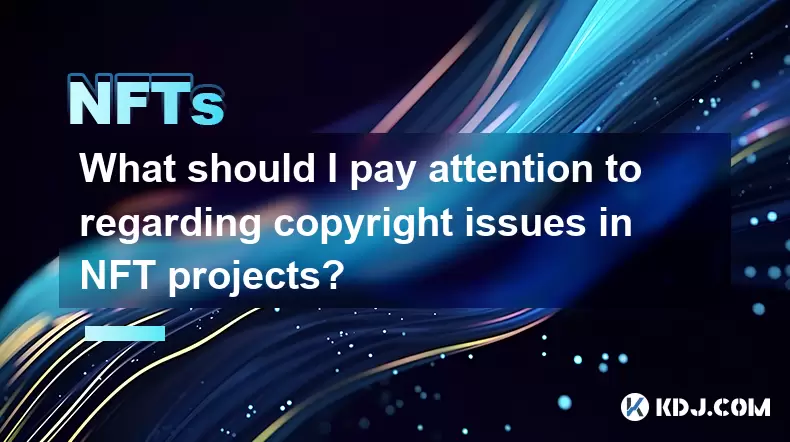
What should I pay attention to regarding copyright issues in NFT projects?
Aug 07,2025 at 06:47am
Understanding Intellectual Property in NFT ProjectsWhen engaging in NFT projects, one of the most critical aspects to consider is intellectual propert...
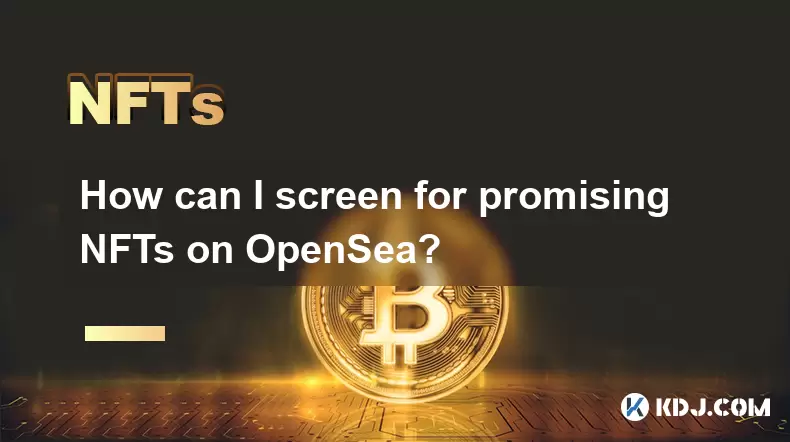
How can I screen for promising NFTs on OpenSea?
Aug 07,2025 at 02:10am
Understanding the NFT Landscape on OpenSeaBefore diving into how to screen for promising NFTs, it's essential to understand the ecosystem of OpenSea. ...
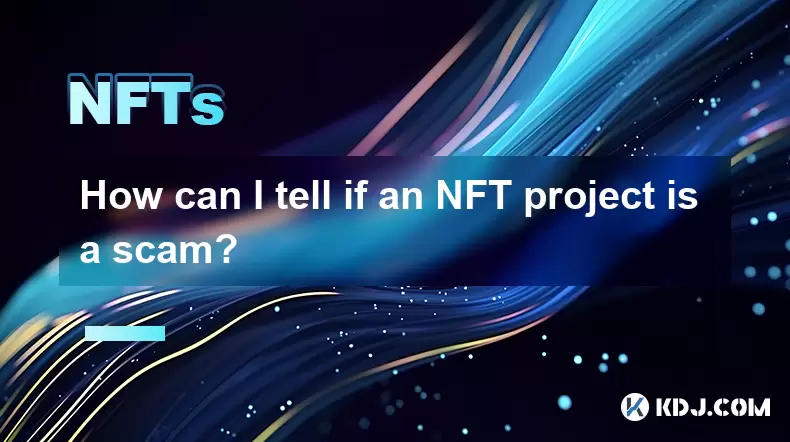
How can I tell if an NFT project is a scam?
Aug 07,2025 at 02:28pm
Understanding the Red Flags of NFT ProjectsIdentifying whether an NFT project is legitimate or a scam requires careful analysis of several key indicat...
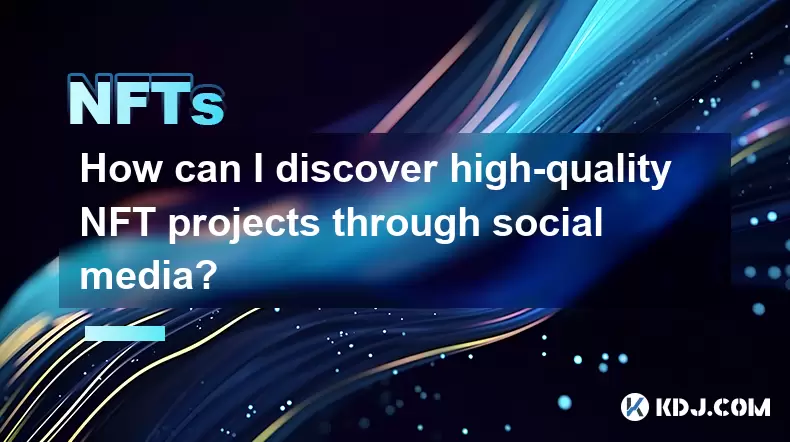
How can I discover high-quality NFT projects through social media?
Aug 07,2025 at 01:22pm
Understanding the Role of Social Media in NFT DiscoverySocial media platforms have become central hubs for the promotion and discovery of high-quality...

How can I determine whether an NFT project's community is healthy?
Aug 07,2025 at 06:29am
What defines a healthy NFT community?A healthy NFT community is more than just a large group of followers on social media. It reflects active engageme...

How can I participate in NFT airdrops?
Aug 07,2025 at 04:04am
Understanding NFT Airdrops and Their PurposeNFT airdrops are promotional events where blockchain projects distribute free NFTs to users who meet speci...

What should I pay attention to regarding copyright issues in NFT projects?
Aug 07,2025 at 06:47am
Understanding Intellectual Property in NFT ProjectsWhen engaging in NFT projects, one of the most critical aspects to consider is intellectual propert...

How can I screen for promising NFTs on OpenSea?
Aug 07,2025 at 02:10am
Understanding the NFT Landscape on OpenSeaBefore diving into how to screen for promising NFTs, it's essential to understand the ecosystem of OpenSea. ...

How can I tell if an NFT project is a scam?
Aug 07,2025 at 02:28pm
Understanding the Red Flags of NFT ProjectsIdentifying whether an NFT project is legitimate or a scam requires careful analysis of several key indicat...

How can I discover high-quality NFT projects through social media?
Aug 07,2025 at 01:22pm
Understanding the Role of Social Media in NFT DiscoverySocial media platforms have become central hubs for the promotion and discovery of high-quality...
See all articles

























































































